- Clone
- 24-31 (See other available formats)
- Regulatory Status
- RUO
- Other Names
- CD40L, gp39, TRAP, T-BAM, TNFSF5
- Isotype
- Mouse IgG1, κ
- Ave. Rating
- Submit a Review
- Product Citations
- publications
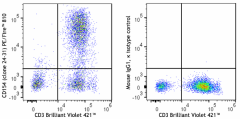
-

Human peripheral blood lymphocytes were stimulated with PMA+ionomycin (6 hrs) and stained with anti-human CD3 Brilliant Violet 421™ and anti-human CD154 (clone 24-31) PE/Fire™ 810 (left) or stained with anti-human CD3 Brilliant Violet 421™ only (right).
| Cat # | Size | Price | Quantity Check Availability | Save | ||
|---|---|---|---|---|---|---|
| 310857 | 25 tests | 128€ | ||||
CD154 (CD40 ligand) is also known as CD40L, gp39, TRAP and T-BAM. CD40 ligand is a 32-39 kD type II transmembrane glycoprotein. It is a member of the TNF superfamily and is expressed on activated T cells. It has been reported to be important for B cell costimulation following binding of its receptor, CD40. Additionally, binding of CD40L to CD40 on B cells promotes the secretion of immunoglobulin and Ig isotype switching. CD40L is also involved in the regulation of cytokine production by T cells.
Product DetailsProduct Details
- Verified Reactivity
- Human
- Reported Reactivity
- Cynomolgus, Rhesus
- Antibody Type
- Monoclonal
- Host Species
- Mouse
- Formulation
- Phosphate-buffered solution, pH 7.2, containing 0.09% sodium azide and BSA (origin USA)
- Preparation
- The antibody was purified by affinity chromatography and conjugated with PE/Fire™ 810 under optimal conditions.
- Concentration
- Lot-specific (to obtain lot-specific concentration and expiration, please enter the lot number in our Certificate of Analysis online tool.)
- Storage & Handling
- The antibody solution should be stored undiluted between 2°C and 8°C, and protected from prolonged exposure to light. Do not freeze.
- Application
-
FC - Quality tested
- Recommended Usage
-
Each lot of this antibody is quality control tested by immunofluorescent staining with flow cytometric analysis. For flow cytometric staining, the suggested use of this reagent is 5 µL per million cells in 100 µL staining volume or 5 µL per 100 µL of whole blood. It is recommended that the reagent be titrated for optimal performance for each application.
* PE/Fire™ 810 has a maximum excitation of 488/561 nm and a maximum emission of 810 nm.
Excessive exposure to light, and commonly used fixation, permeabilization buffers can affect PE/Fire™ 810 fluorescence signal intensity and spread. Please keep conjugates protected from light exposure. For more information and representative data, visit our Fire Dyes page. - Excitation Laser
-
Blue Laser (488 nm)
Green Laser (532 nm)/Yellow-Green Laser (561 nm)
- Application Notes
-
Additional reported applications (for the relevant formats) include: immunofluorescence microscopy1,3 and blocking of T cell-dependent B cell differentiation1,2,4,5. The LEAF™ purified antibody (Endotoxin <0.1 EU/µg, Azide-Free, 0.2 µm filtered) is recommended for functional assays (Cat. No. 310812). For highly sensitive assays, we recommend Ultra-LEAF™ purified antibody (Cat. No. 310828) with a lower endotoxin limit than standard LEAF™ purified antibodies (Endotoxin <0.01 EU/µg).
-
Application References
(PubMed link indicates BioLegend citation) -
- Brams P, et al. 2001. Int. Immunopharmacol. 1:277. (Block, IF)
- Rushworth SA, et al. 2002. Transplantation 73:635. (Block)
- Berner B, et al. 2000. Ann. Rheum. Dis. 59:190. (IF)
- Nordström T, et al. 2006. J. Leukocyte Biol. 79:319. (Block)
- Zhang AL, et al.2007. Blood doi:10.1182/blood-2007-02-076364. (Block) PubMed
- Kuchen S, et al. 2007. J. Immunol. 179:5886.
- Matus-Nicodermos R, et al. 2011. J. Immunol. 186:2164. PubMed
- Peterson VM, et al. 2017. Nat. Biotechnol. 35:936. (PG)
- RRID
-
AB_2927875 (BioLegend Cat. No. 310857)
Antigen Details
- Structure
- TNF superfamily, type II transmembrane glycoprotein, cleaved as soluble CD40L, 32-39 kD
- Distribution
-
Activated T cells
- Function
- B cell costimulation
- Ligand/Receptor
- CD40
- Cell Type
- T cells, Tregs
- Biology Area
- Costimulatory Molecules, Immunology
- Molecular Family
- CD Molecules
- Antigen References
-
1. Najafian N, et al. 2003. Expert Opin. Biol. Ther. 3:227.
2. Racke M, et al. 2002. Expert Opin. Ther. Targets. 6:275.
3. Ford G, et al. 1999. J. Immunol. 162:4037. - Gene ID
- 959 View all products for this Gene ID
- UniProt
- View information about CD154 on UniProt.org
Related FAQs
Other Formats
View All CD154 Reagents Request Custom ConjugationCompare Data Across All Formats
This data display is provided for general comparisons between formats.
Your actual data may vary due to variations in samples, target cells, instruments and their settings, staining conditions, and other factors.
If you need assistance with selecting the best format contact our expert technical support team.
-
Purified anti-human CD154
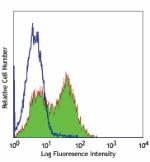
PMA + ionomycin-stimulated human PBMCs (5 hours) stained wit... -
FITC anti-human CD154

TPA+ ionomycin-stimulated human PBMCs (6 hours) stained with... -
PE anti-human CD154

PMA+ionomycin-stimulated human PBMCs (6 hours) stained with ... -
PE/Cyanine5 anti-human CD154
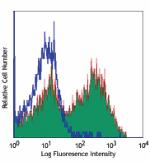
TPA+ ionomycin-stimulated human PBMCs (6 hours) stained with... -
APC anti-human CD154

TPA+ ionomycin-stimulated human PBMCs (5 hours) stained with... -
Biotin anti-human CD154
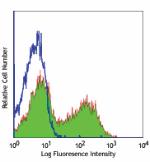
TPA+ ionomycin-stimulated human PBMCs (5 hours) stained with... -
Alexa Fluor® 488 anti-human CD154
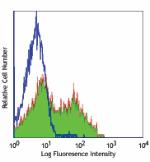
TPA+ ionomycin-stimulated human PBMCs (5 hours) stained with... -
Alexa Fluor® 647 anti-human CD154
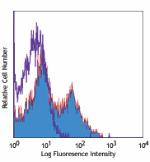
TPA+ ionomycin-stimulated human PBMCs (5 hours) stained with... -
Pacific Blue™ anti-human CD154

PMA+ionomycin-stimulated human PBMCs (6 hours) stained with ... -
Brilliant Violet 785™ anti-human CD154

PMA + ionomycin-stimulated (6 hours) human peripheral blood ... -
APC/Cyanine7 anti-human CD154

TPA+ ionomycin-stimulated human PBMCs (5 hours) stained with... -
Brilliant Violet 421™ anti-human CD154
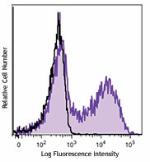
PMA+ionomycin-stimulated human peripheral blood lymphocytes ... -
Brilliant Violet 605™ anti-human CD154
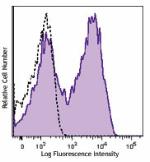
6-hour PMA+ionomycin-stimulated human peripheral blood lymph... -
Ultra-LEAF™ Purified anti-human CD154

PMA+ionomycin-stimulated human PBMCs (6 hours) stained with ... -
Brilliant Violet 510™ anti-human CD154

PMA+ionomycin-stimulated (6 hours) human peripheral blood ly... -
PE/Cyanine7 anti-human CD154
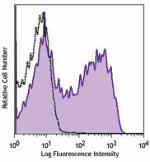
PMA+ionomycin-stimulated (6 hours) human peripheral blood ly... -
PerCP/Cyanine5.5 anti-human CD154

PMA+ ionomycin-stimulated (6 hours) human peripheral blood l... -
Brilliant Violet 711™ anti-human CD154

PMA+ionomycin-stimulated (6 hours) human peripheral blood ly... -
Purified anti-human CD154 (Maxpar® Ready)
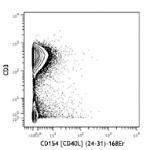
Human PBMCs were incubated for 6 hours in media alone (top) ... 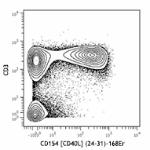
-
PE/Dazzle™ 594 anti-human CD154
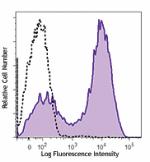
PMA+ionomycin (six hours) stimulated human peripheral blood ... -
TotalSeq™-A0032 anti-human CD154
-
Alexa Fluor® 700 anti-human CD154
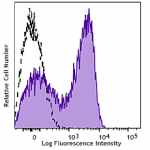
PMA+ionomycin-stimulated (6 hours) human peripheral blood ly... -
APC/Fire™ 750 anti-human CD154
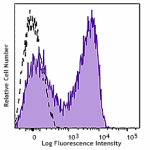
PMA+ionomycin-stimulated (6 hours) human peripheral blood ly... -
TotalSeq™-C0032 anti-human CD154
-
TotalSeq™-B0032 anti-human CD154
-
TotalSeq™-D0032 anti-human CD154
-
PE/Fire™ 640 anti-human CD154

Human peripheral blood lymphocytes were stimulated with PMA+... -
PE/Fire™ 810 anti-human CD154

Human peripheral blood lymphocytes were stimulated with PMA+... -
PerCP/Fire™ 780 anti-human CD154

Human peripheral blood lymphocytes were stimulated with PMA+... -
PE/Fire™ 700 anti-human CD154

Human peripheral blood lymphocytes were stimulated with Cell... -
Spark Red™ 718 anti-human CD154 (Flexi-Fluor™)
 Login / Register
Login / Register 













Follow Us